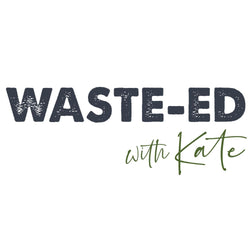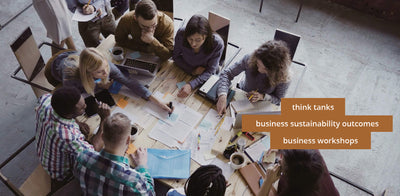
f you’ve ever been on Pinterest, you’re sure to have seen a million and one upcycling projects, but there’s a lot more to this waste-reducing activity than just shabby-chic pastel coloured furniture. Upcycling is a great way to divert materials from landfills – and save you money in the process! We’ve broken down what it’s all about, why we should be doing it, and compiled some easy and useful upcycling projects.
Most of us are familiar with some iteration of the 5 R’s of zero waste; Refuse, Reduce, Reuse, Recycle, and Rot. Obviously, the first two R’s should always be our first port of call and can include a number of actions like not participating in the fast fashion cycle, asking for your drink to come without a straw, or buying products in plastic-free packaging. But what about the stuff we’ve already bought?
We need to fundamentally change how we think about objects and their usefulness. If you think something has done its dash, your first thought should be “how could I reuse or upcycle this?” rather than just chucking it in the rubbish or recycling bin.
Upcycling involves repurposing an old or broken item into something new. By upcycling items to serve new functions, we save them from landfills – creating a circular economy. Back in the day, reusing, upcycling, and repairing was just the norm. We ‘made do’. Nothing was thrown out unless it was completely busted, and even then, someone else would probably take it out of the dump and find another use for it.
“In one generation, what was always normal has now become an ‘alternative’ way of living. Everything that we classify today as being a sustainable, alternative way of living, our parents or grandparents did as part of their normal day-to-day activities “
Kate Fenwick

Nowadays, some things just aren’t made to last, and there’s a huge amount of plastic and textile associated waste from cheap toys and clothes. With the reduction in retails prices of certain things, we also seem to place less value in things. So, when something breaks, or a seam busts, we think “oh well it was only $10” and throw it out. This keeps us in a hugely wasteful linear economy.
“At the end of the day, we realised we were actually just throwing our money into the landfill”
Kate Fenwick
Recycling is good, but it’s definitely not a perfect solution. It takes a huge amount of energy and money to recycle plastics, aluminium, glass, and paper. Not to mention that a lot of people still don’t recycle properly, so a huge amount of ‘contaminated’ recyclable material just ends up in landfills anyway. Materials also degrade in the recycling process, meaning a plastic milk bottle cannot be made into another milk bottle because the quality of the plastic decreases. It’s not the perfect cycle a lot of people imagine it to be.
Essentially, by recycling, we’re just prolonging the time it takes for the materials to end up in landfill, not diverting them entirely.
In an ideal world, we’d be entirely single-use plastic/product free. Until then, reusing and upcycling is a great step in the right direction.
Ways to reuse things and upcycling projects that you might actually do.
A lot of upcycling projects are very specific and large-scale – here are some more ‘everyday’ kinds of things that you could do, and waste-free projects that are super useful.
Glass Jars
Glass jars have endless possibilities for reuse – storage is one of the most obvious. If you make sure to buy food items packaged in glass jars rather than plastic, then you’ll find yourself with perfect bulk-buying vessels in no time. But they can also be used in place of new products like pots for herbs or succulents, vases, candleholders, Tupperware, gift boxes/bags etc. Glass jars are also the perfect vessels for taking soups and stews to work for lunch.



Old fabric – clothes, towels, sheets etc.
Fabric from worn-out t-shirts, holey socks, or old sheets can be used for a heap of DIY craft projects, like tote bags, kids toys, and sock puppets, but also for more ‘everyday’ items like reusable cloth makeup wipes or baby wipes. Kate made a video a while back showing how easy it is to upcycle an old towel into reusable baby wipes.



Paper and Cardboard
Before you recycle or burn paper/cardboard, consider if it could be used for something else; cardboard boxes, of course, are great for storage or for kids to get creative with; old gift wrap/cards, magazines, and scrap paper can all be reused for gift wrapping; and newspaper is a great way to get rid of plastic bin liners.

Powered by AZEXO Shopify page builder


